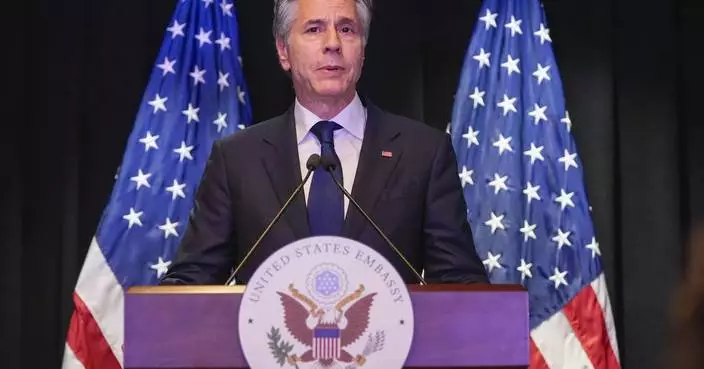An appeals court on Friday told a judge to take another look at whether a Montana fish should be protected, saying that U.S. wildlife officials did not consider all environmental factors when it decided against designating the Arctic grayling as a threatened or endangered species.
The three-judge panel of the 9th U.S. Circuit Court of Appeals reversed U.S. District Judge Sam Haddon's 2016 ruling that the U.S. Fish and Wildlife Service's decision not to list Montana's Arctic grayling as threatened or endangered was based on the best available science.
Wildlife officials' conclusion that the grayling population was increasing was wrong because they did not take into account data that showed the fish's population in the Big Hole River was declining, the judges said in their decision.
The federal agency also acted arbitrarily and capriciously in dismissing the threats of high stream temperatures, low stream flows and climate change to the grayling population, the judges ruled.
Those factors put grayling in Montana in danger of extinction, said Jenny Harbine, an attorney for the Center for Biological Diversity, which sued force federal protections for the fish.
"The service had blown off the threat to grayling from warmer water temperatures, but the court found they had no legitimate reason to do so," Harbine said. "Arctic grayling are a cold water fish but as we know increasing summer temperatures, earlier spring runoff and reduced snow pack have impacted the water temperatures in almost all of Montana's rivers."
The wildlife advocacy group says in its lawsuit that climate change will only make conditions worse without federal protections in place. Those protections would restrict land and water use in and around the grayling's habitat.
Fish and wildlife service spokeswoman Jennifer Strickland said her agency is reviewing the ruling and has no comment.
Arctic grayling, a relative of trout known for their sail-like dorsal fin, are also found in Alaska and Canada, but the court case only affects the fish's Montana population. In Montana, grayling now occupy just 10 percent of the 1,250 miles (2,011 kilometers) of streams in the upper Missouri River basin that they historically inhabited.
In 2010, the fish and wildlife service determined that that Arctic grayling in Montana warranted federal protection, but other species took precedence. Four years later, they said the fish did not warrant listing as threatened or endangered because additional populations had been found and nearly all were stable or improving.
The 2014 decision also factored in a state program that worked with landowners to improve water flows and fish habitat along the Big Hole River, where irrigation had threatened one of the grayling's last refuges in the state. Gov. Steve Bullock, a Democrat, then touted the program and keeping the grayling off the endangered species list as a success story.
Montana Fish, Wildlife and Parks spokesman Greg Lemon did not immediately return a telephone message seeking comment on the court ruling.
AP writer Matthew Brown in Billings, Montana, contributed to this report.
KYIV, Ukraine (AP) — A Ukrainian court on Friday ordered the detention of the country’s farm minister in the latest high-profile corruption investigation, while Kyiv security officials assessed how they can recover lost battlefield momentum in the war against Russia.
Ukraine’s High Anti-Corruption Court ruled that Agriculture Minister Oleksandr Solskyi should be held in custody for 60 days, but he was released after paying bail of 75 million hryvnias ($1.77 million), a statement said.
Ukraine’s National Anti-Corruption Bureau suspects Solskyi headed an organized crime group that between 2017 and 2021 unlawfully obtained land worth 291 million hryvnias ($6.85 million) and attempted to obtain other land worth 190 million hryvnias ($4.47 million).
Ukraine is trying to root out corruption that has long dogged the country. A dragnet over the past two years has seen Ukraine’s defense minister, top prosecutor, intelligence chief and other senior officials lose their jobs.
That has caused embarrassment and unease as Ukraine receives tens of billions of dollars in foreign aid to help fight Russia’s army, and the European Union and NATO have demanded widespread anti-graft measures before Kyiv can realize its ambition of joining the blocs.
In Ukraine's capital, doctors and ambulance crews evacuated patients from a children’s hospital on Friday after a video circulated online saying Russia planned to attack it.
Parents hefting bags of clothes, toys and food carried toddlers and led young children from the Kyiv City Children’s Hospital No. 1 on the outskirts of the city. Medics helped them into a fleet of waiting ambulances to be transported to other facilities.
In the video, a security official from Russian ally Belarus alleged that military personnel were based in the hospital. Kyiv city authorities said that the claim was “a lie and provocation.”
Kyiv Mayor Vitali Klitschko said that civic authorities were awaiting an assessment from security services before deciding when it was safe to reopen the hospital.
“We cannot risk the lives of our children,” he said.
Meanwhile, Ukrainian President Volodymyr Zelenskyy was due to hold online talks Friday with the Ukraine Defense Contact Group, which has been the key international organization coordinating the delivery of weapons and other aid to Ukraine.
Zelenskyy said late Thursday that the meeting would discuss how to turn around Ukraine’s fortunes on the battlefield. The Kremlin’s forces have gained an edge over Kyiv’s army in recent months as Ukraine grappled with a shortage of ammunition and troops.
Russia, despite sustaining high losses, has been taking control of small settlements as part of its effort to drive deeper into eastern Ukraine after capturing the city of Avdiivka in February, the U.K. defense ministry said Friday.
It’s been slow going for the Kremlin’s troops in eastern Ukraine and is likely to stay that way, according to the Institute for the Study of War. However, the key hilltop town of Chasiv Yar is vulnerable to the Russian onslaught, which is using glide bombs — powerful Soviet-era weapons that were originally unguided but have been retrofitted with a navigational targeting system — that obliterate targets.
“Russian forces do pose a credible threat of seizing Chasiv Yar, although they may not be able to do so rapidly,” the Washington-based think tank said late Thursday.
It added that Russian commanders are likely seeking to advance as much as possible before the arrival in the coming weeks and months of new U.S. military aid, which was held up for six months by political differences in Congress.
While that U.S. help wasn’t forthcoming, Ukraine’s European partners didn’t pick up the slack, according to German’s Kiel Institute for the World Economy, which tracks Ukraine support.
“The European aid in recent months is nowhere near enough to fill the gap left by the lack of U.S. assistance, particularly in the area of ammunition and artillery shells,” it said in a report Thursday.
Ukraine is making a broad effort to take back the initiative in the war after more than two years of fighting. It plans to manufacture more of its own weapons in the future, and is clamping down on young people avoiding conscription, though it will take time to process and train any new recruits.
Jill Lawless contributed to this report.
Follow AP’s coverage of the war in Ukraine at https://apnews.com/hub/russia-ukraine

Ukrainian young acting student Gleb Batonskiy plays piano in a public park in Kyiv, Ukraine, Thursday, April 25, 2024. (AP Photo/Francisco Seco)










